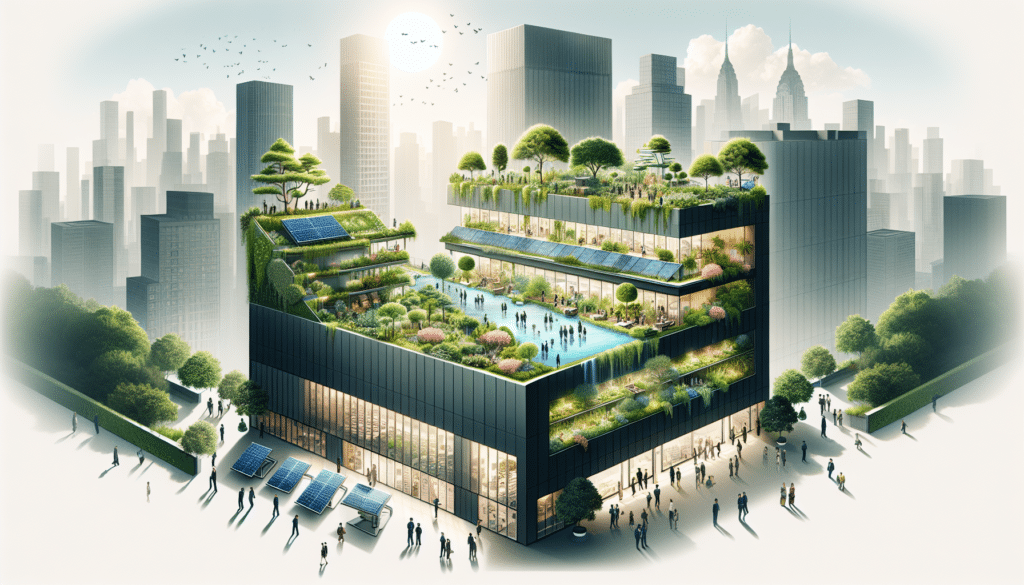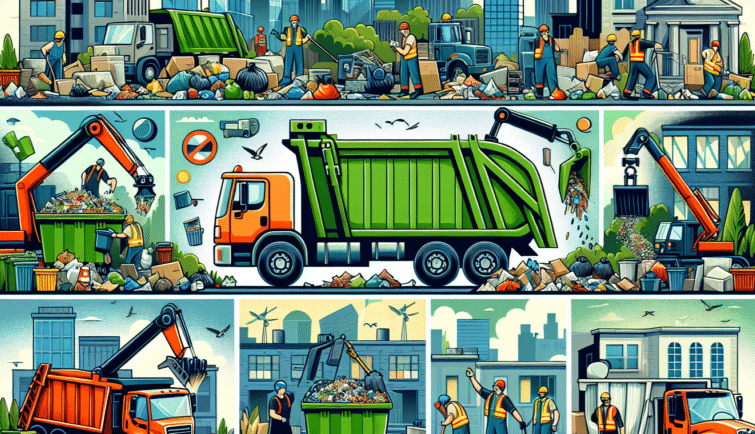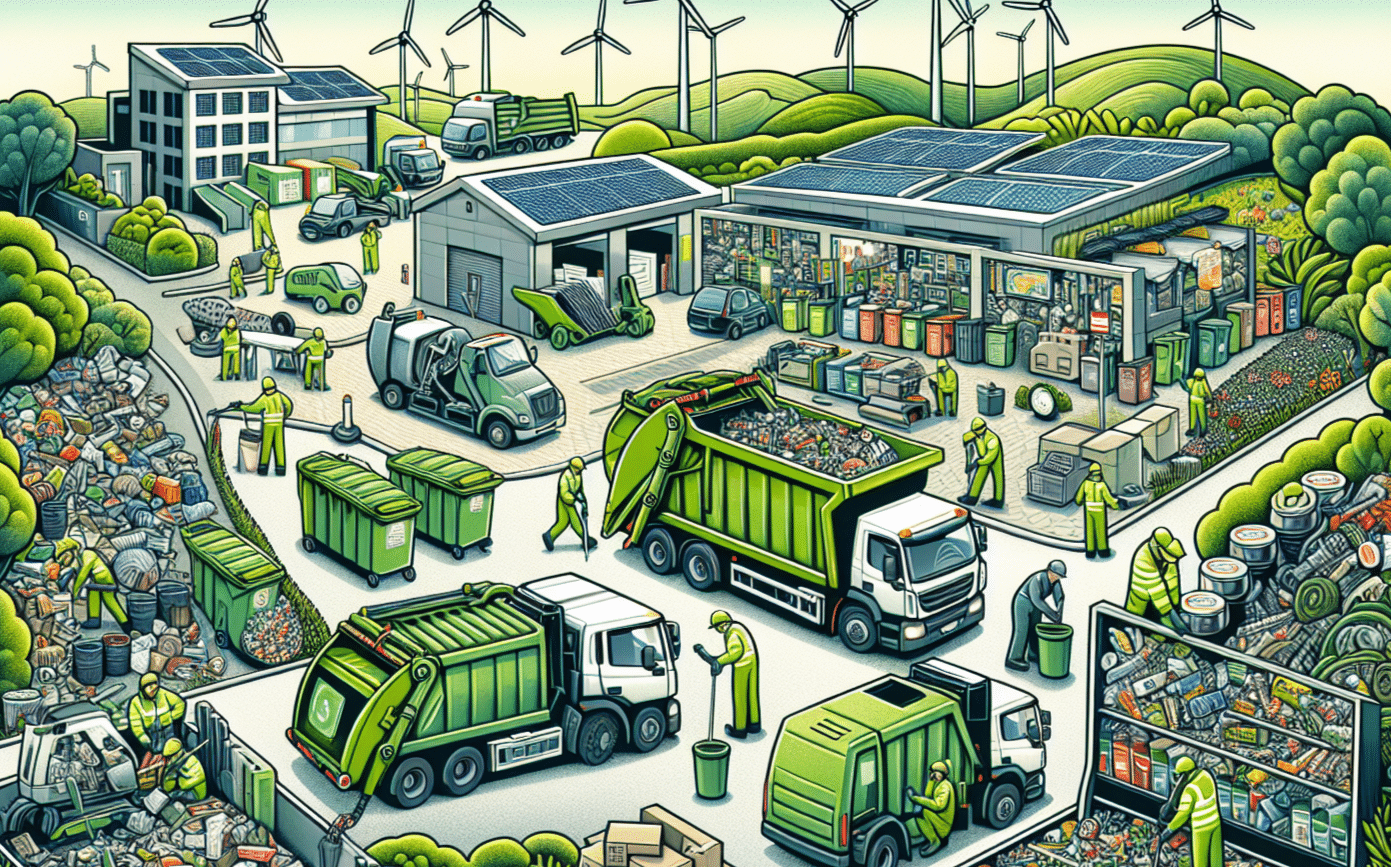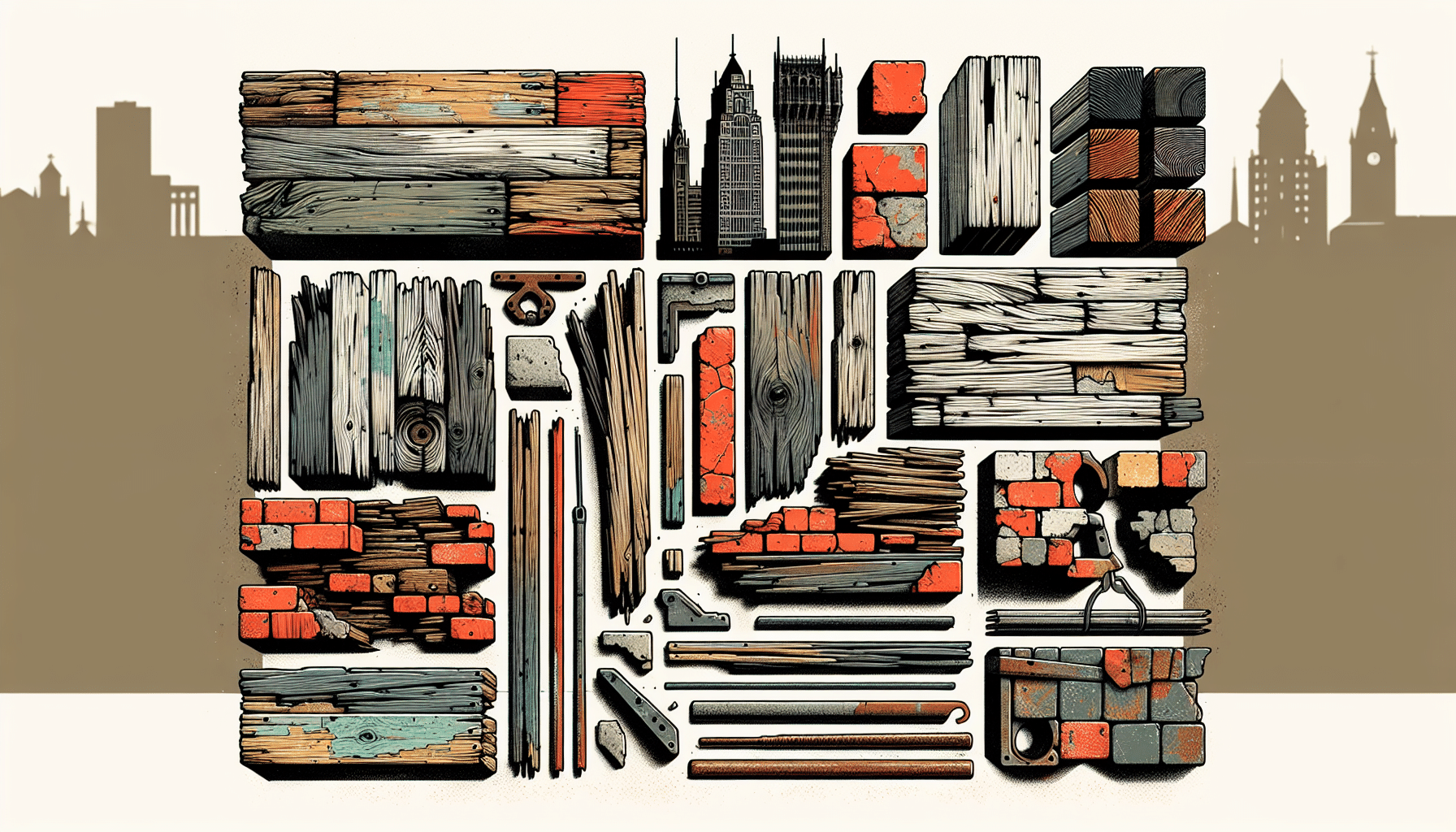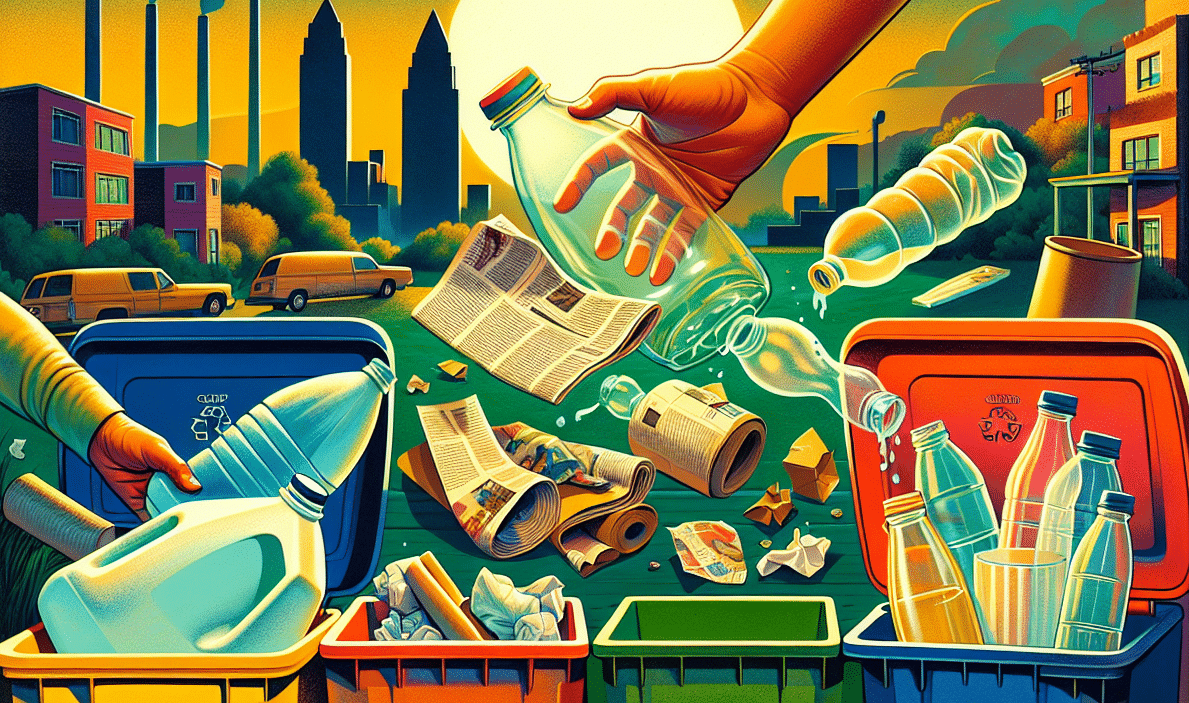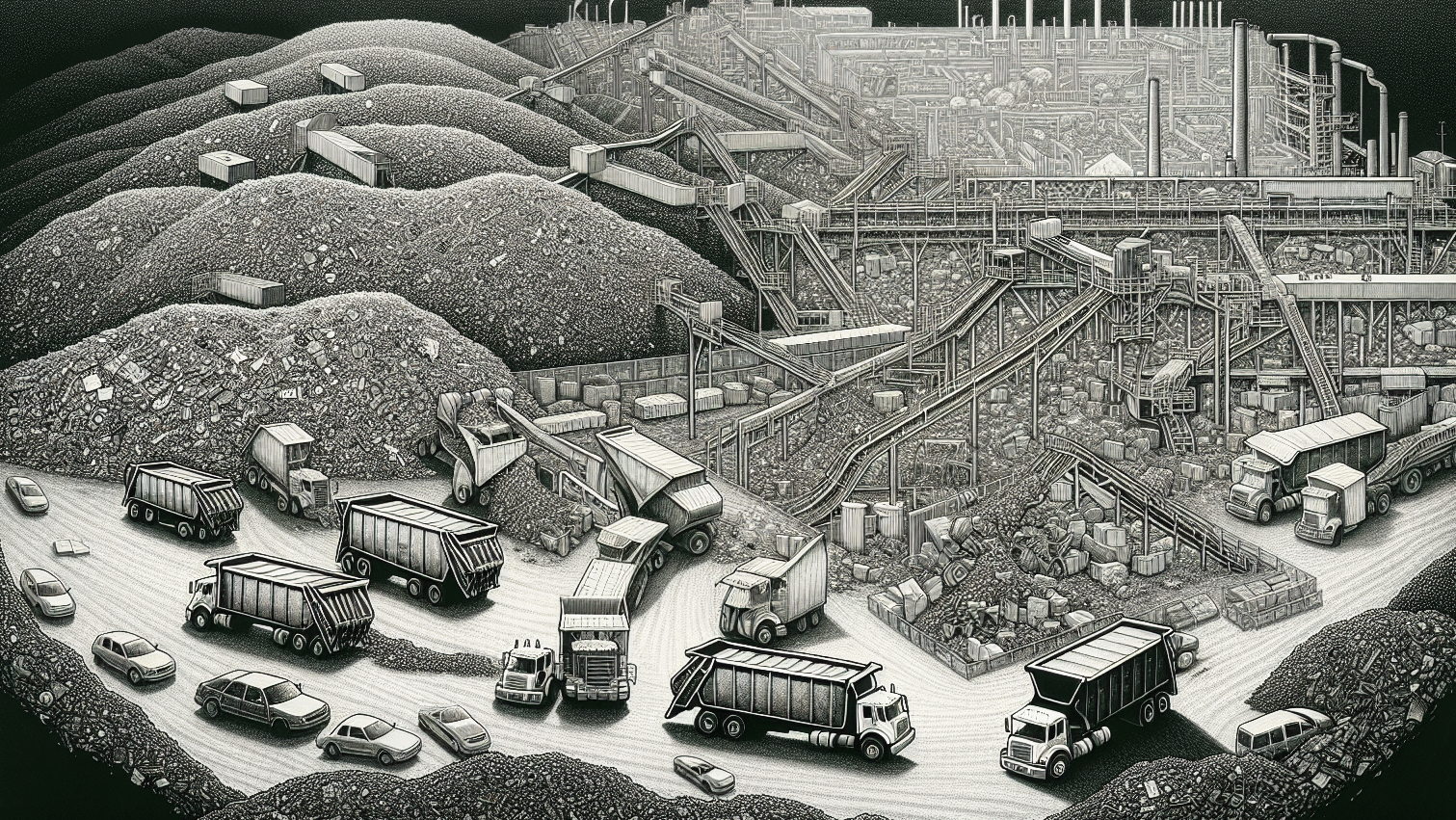Recycled buildings, in addition to being an architectural trend, stand as tangible proofs of urban transformation through sustainability. This article showcases ten recycled buildings that have turned urban waste into skyline landmarks. These projects demonstrate the successful blend of environmental stewardship and innovative design, fascinating creations that are both functional and testimony to a greener future in architecture.
Key Takeaways
- Innovative recycled buildings are transforming urban landscapes by incorporating materials like WasteBasedBricks, used car windows, and shipping containers, to blend modern design with sustainability.
- Recycled materials significantly contribute to environmental protection by reducing landfill waste, lowering greenhouse gas emissions, and conserving energy compared to using new raw materials in construction.
- The use of repurposed materials in architecture not only serves environmental goals but also offers new job opportunities, cost savings, and can lead to competitive advantages such as LEED certification for companies.
The Reimagined Governor – Rotterdam, the Netherlands
A unique townhouse in the bustling city of Rotterdam, the Netherlands, exemplifies the power of recycling in construction. The ‘De Gouverneur,’ a marvel in its own right, is constructed using 15 tons of recycled industrial waste. Among the materials used are recycled car windows, showcasing an innovative approach to sustainability. This innovative use of recycled materials contributes to the townhouse’s distinctive aesthetic, setting it apart in the urban landscape. Situated in the heart of Rotterdam, the building seamlessly blends with the urban fabric, referencing local architectural styles and featuring a broad wooden entrance. It stands as a beacon of sustainable development, inspiring architects and urban planners worldwide.
Eco-Friendly Cabana Floripa – Florianopolis, Brazil
Cabana Floripa, a stunning eco-friendly rental cabin, sits atop a hill on the northern side of Florianopolis Island, Brazil. Constructed using recycled debris sourced from demolished homes, Cabana Floripa redefines the concept of a ‘recycled materials cottage’. The cabin offers guests not just a comfortable stay, but also a stunning view of the sea and a white sand beach, making it an epitome of sustainable luxury. The cabin boasts comfortable sleeping arrangements, modern amenities, and a fully functional kitchen and bathroom, all developed from recycled materials.
The Artistic Collage House – Mumbai, India
The Collage House in the bustling city of Mumbai, India, symbolizes sustainable architecture. With its unique blend of traditional vernacular materials and a modern design approach, the house offers a unique living space for a multi-generational family. Recycled materials such as old doors, windows, century-old stone columns, reclaimed teak, and stone waste form the backbone of this architectural marvel.
Some of the distinctive features of The Collage House include an exterior wall made from repurposed doors and a modern steel and glass pavilion on the rooftop, all created from recycled and repurposed materials. The Collage House thus showcases the myriad possibilities of using inexpensive and recycled materials in construction sites, inspiring architects worldwide.
Captivating Bottle Houses – Cap-Egmont, Prince Edward Island
The captivating Bottle Houses, though temporarily closed for the season, is a unique attraction in Cap-Egmont, Prince Edward Island. Conceived by Édouard Arsenault and his daughter, Réjeanne Arsenault, the Bottle Houses showcase the ingenuity of using recycled glass materials in construction, captivating visitors with their creativity and sustainability. More than 25,000 recycled glass bottles have been used to create a six-gabled house, a tavern, and a chapel, making it a remarkable example of an environmentally conscious building.
With specific details like an altar and pews in the chapel, The Bottle Houses offer visitors a unique experience to remember. Visitors can immerse themselves in the interplay of color and light, enjoy the gardens, and experience the serenity it offers from daily life, enhanced by the scents of wild roses and the ocean’s breeze.
Sustainable Earthship – Taos, New Mexico
A community of Earthship homes in Taos, New Mexico, provides a glimpse into the future of sustainable living. These homes, designed for off-grid living, utilize natural and recycled materials. Earthships are also self-sufficient, producing their own electricity, water, and food for its inhabitants. Key sustainability principles are integrated into these homes’ design, including thermal and solar heating and cooling and built-in recycling systems.
Each Earthship home contains a courtyard with a rainwater collection system, solar and wind power for off-grid operation, a greenhouse, a fish pond, and an electric car garage. These features make the Earthship home an epitome of sustainable living.
Innovative Container Guest House – San Antonio, Texas
An innovative guest house in San Antonio, Texas, provides a unique stay for visitors. The Container Guest House was constructed from one-way shipping containers and recycled telephone poles. Other features that were incorporated into this guest house include a deck created from recycled HVAC equipment pads, made out of soda bottles, and supported by a steel frame. The house is enmeshed with wire panels designed to be overrun with evergreen vines, fully incorporating the natural aspect of recycled materials into the design.
Inside the guest house, bamboo plywood is used both for wall insulation and flooring, offering an eco-friendly, aesthetic solution. The rooftop garden, not directly planted on the container’s roof, assists in air circulation and reduces heat absorption, showcasing the commitment to sustainability. With features like a composting toilet system and a rooftop garden irrigated using recycled gray water, the guest house offers a unique, eco-friendly stay for visitors.
Resourceful Recycled House – Charlottesville, Virginia
A charming retreat in Charlottesville, Virginia, serves as an exemplar of sustainable architecture. Though temporarily closed to the public, The Recycled House was built from reclaimed materials such as recycled wood, and repurposed from various sources, including a deconstructed garage, a cotton mill, and a mansion. The house showcases the potential of recycling in construction. The vision of The Recycled House was brought to life through a six-year collaborative effort led by the owner Debra Weiss and the architectural and construction expertise of J. Scott Robinson. With 33 windows ensuring generous natural lighting, The Recycled House is an eco-friendly guest house that promises to be a charming retreat for all who visit.
Stunning Recycled Materials Cottage – Panguipulli, Chile
The Recycled Materials Cottage sits nestled on a wooded hillside beside Pirihueico Lake in Chile. Designed by Juan Luis Martinez Nahuel, this house showcases stunning architecture that uses all recycled materials. The house was constructed in several modular parts that were small enough to be transported by truck.
The Recycled Materials Cottage is a single-story house, a design that strategically separates spaces through the use of individual privacy levels. The parquet flooring is made from eucalyptus and rauli that once belonged to a house built by Larraín, Swinburn, and Covarrubias in the 1970s. The home’s laminated beams and steel pieces, once part of a temporary exhibit, were repurposed as critical structural elements of the cottage. The strategic use of recycled materials used in the creation of the house showcases the overall potential of repurposed materials in architecture.
The Power of Recycling in the Construction Industry
Recycling is an environmentally friendly practice that can change the construction industry for the better. By recycling construction materials, the industry can:
- Significantly reduce the amount of waste sent to landfills.
- Decrease the production of harmful gasses like hydrogen sulfide.
- Utilize recycled materials in construction, which often requires less energy than using new raw materials and ultimately lowers greenhouse gas emissions.
Beyond environmental benefits, recycling in construction also creates job opportunities, leads to cost savings for both construction companies and their clients, and significantly contributes to carbon reduction for the planet.
Inspiring Architectural Opportunities with Recycled Materials
Recyclable architecture’s emergence paves the way for innovative construction solutions. From initiatives like Architectuur MAKEN’s WasteBasedBricks to Michael Reynolds’ Earthship concept, these projects showcase the potential of waste materials, including fabric waste, to serve as high-quality, aesthetic, and innovative construction solutions. Recycled materials and reused materials contribute to energy-efficient buildings and have a reduced environmental impact, promoting sustainable urban development.
Summary
In the journey towards sustainable living, the construction industry plays a pivotal role. From Rotterdam to San Antonio, architects and developers are transforming urban skylines with innovative buildings made from recycled materials. These buildings are not just eco-friendly but are also aesthetically pleasing and functional. They serve as a beacon for sustainable development, inspiring architects, urban planners, and individuals worldwide.
Frequently Asked Questions
What is an example of recycling in architecture?
Container City is a great example of recycling in architecture, where old shipping containers were transformed into functional and stunning spaces.
Is it cheaper to Build a House with recycled materials?
Yes, building a house with recycled materials can be a cost-effective and environmentally friendly option, as it can result in stronger, more efficient, and one-of-a-kind homes.
What is the ‘De Gouverneur’ in Rotterdam made of?
The ‘De Gouverneur’ in Rotterdam is made of 15 tons of recycled waste materials, including ceramics, glass, and clay, which have been transformed into innovative bricks used for the construction of the building.
How does recycling benefit the construction industry?
Recycling in the construction industry benefits by reducing waste, lowering greenhouse gas emissions, creating job opportunities, and leading to cost savings for both the construction company and its clients.
What are Earthship homes in Taos, New Mexico?
Earthship homes in Taos, New Mexico are self-sufficient, utilizing natural and recycled materials, and designed for off-grid living with capabilities for producing electricity, collecting water, and growing food.
